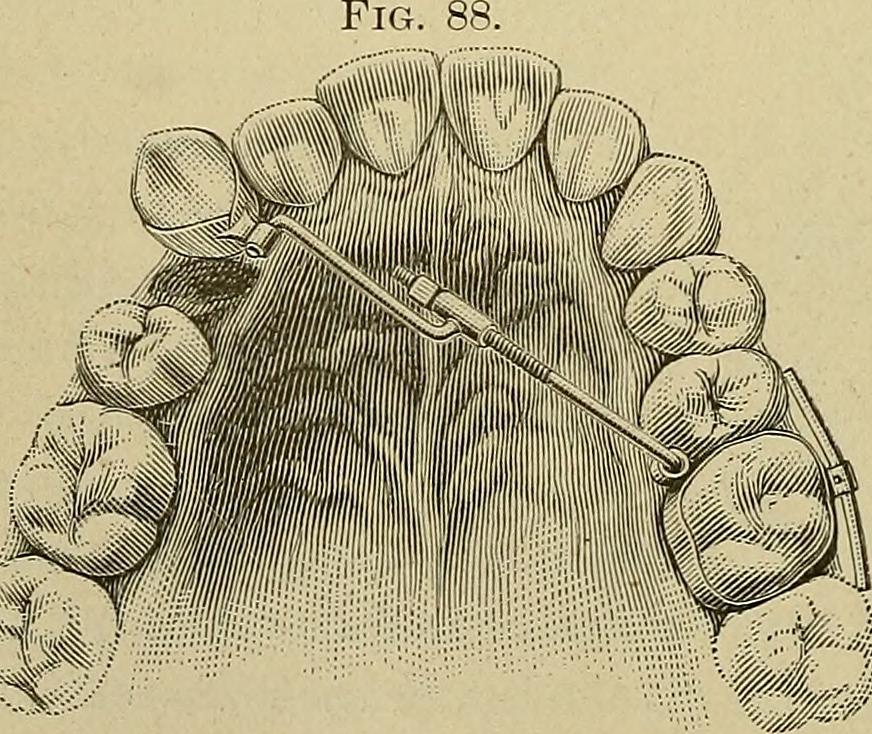Modern braces have come a long way over the years. Today’s designs are far sleeker and more comfortable than ever before, but there was a time when a straight smile meant catgut and crude metal, or if you were fancy, gold wire. Humanity’s first attempts at manipulating crooked teeth into more desirable positions have been found in ~50,000 year-old remains. Bet you didn’t know the history of braces went back that far, eh? Also, your shiny brackets and colorful bands probably don’t seem that bad next to animal skin and dirty wire!
While SCO is all about the latest techniques and cutting-edge technology, it is fun to take a look back at where orthodontics began. Before the days of self-ligating systems and clear aligner therapy, there were centuries of attempts at correcting poorly aligned teeth and jaws in order to improve chewing, speaking, and the overall appearance of a patient. Let us take a closer look at what some of these designs entailed!
The ancient origins of orthodontics
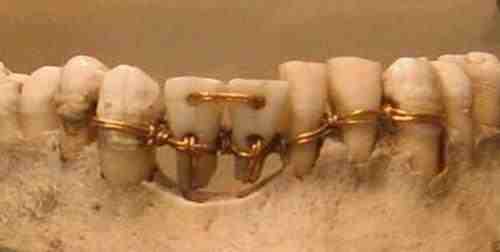
Mummies are not the only ones who have been found sporting ancient orthodontic gear. Greeks, Etruscans, and Romans were also in on the earliest days of orthodontia. Ever heard of a guy named Hippocrates, or a little thing called the Hippocratic oath? Turns out the ancient Greek physician wrote the very first known description of tooth irregularities, way back in about 400 B.C. Classical Greek philosopher Socrates described a gold band Etruscan women used to preserve the position of the teeth after death in his work, and Roman writer Celsus recommended using the fingers to push newly emerging teeth into their proper position, though we are not sure what he would have come up with for a retainer!
18th century interest
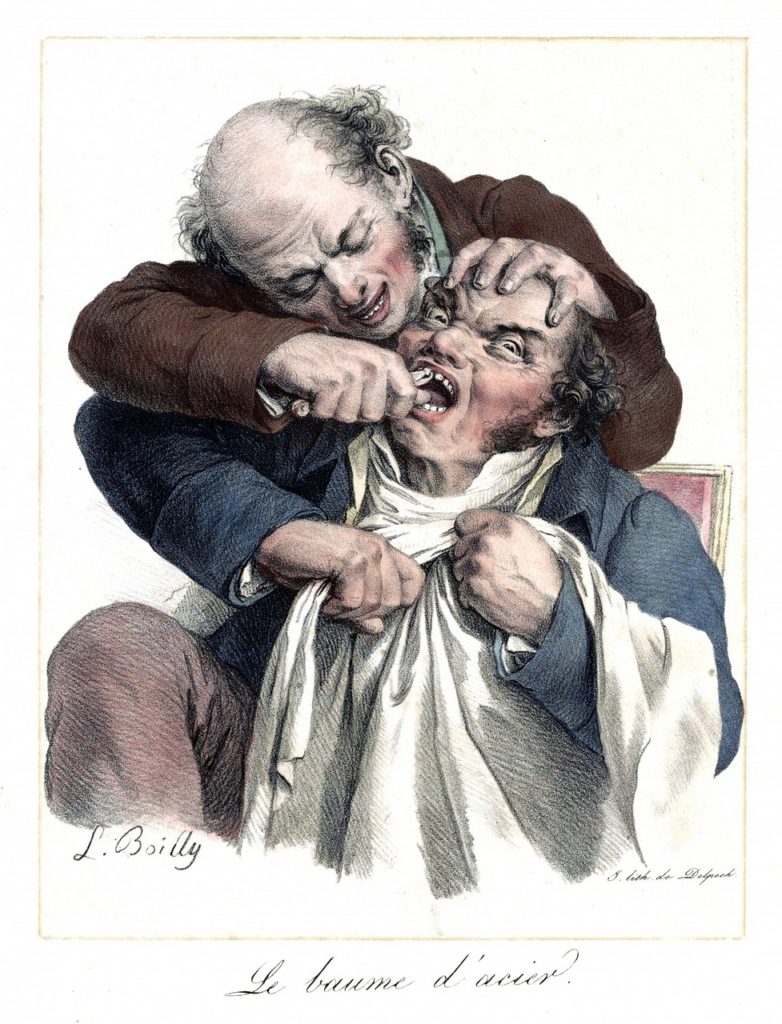 There was not any real progress made in orthodontics until about the 18th century, which saw a flurry of development in dental techniques. There were some real stinkers along the way, however, including something called a bandeau. Written about by intrepid French dentist Pierre Fauchard in 1728, this horseshoe-shaped piece of metal was placed outside the teeth and string or wire used to tie the teeth to the arch. The bandeau was similar to modern braces in that it relied on steady pressure over time, but it was not adjustable, and was very difficult to use for moving individual teeth in different directions. Fauchard also operated on patients with a set of forceps called a “pelican,” forcibly realigning the teeth and tying them to the adjacent teeth to hold them in place while they healed. Yikes!
There was not any real progress made in orthodontics until about the 18th century, which saw a flurry of development in dental techniques. There were some real stinkers along the way, however, including something called a bandeau. Written about by intrepid French dentist Pierre Fauchard in 1728, this horseshoe-shaped piece of metal was placed outside the teeth and string or wire used to tie the teeth to the arch. The bandeau was similar to modern braces in that it relied on steady pressure over time, but it was not adjustable, and was very difficult to use for moving individual teeth in different directions. Fauchard also operated on patients with a set of forceps called a “pelican,” forcibly realigning the teeth and tying them to the adjacent teeth to hold them in place while they healed. Yikes!
Amazingly, the bandeau did not go out of fashion until about 1819, when Christophe-François Delabarre developed the wire crib, heralding the birth of contemporary orthodontics. The crib was made of wires, often metal, that had been bent and then soldered together to make a “cage” that fit tightly over and around the teeth. Strings or metal springs could then be attached and used to apply constant force to teeth, slowly moving them into new, improved positions, in much the same way our braces and aligners work. The wire crib is actually the precursor of several of today’s appliances.
Beginning in 1880, Edward Hartley Angle, considered by many to be the Father of Modern Orthodontics, identified the true properties of malocclusions, or misalignments, of the teeth and jaws. These were addressed with an increasingly effective set of orthodontic appliances that continues to this day.
The path to modern orthodontics
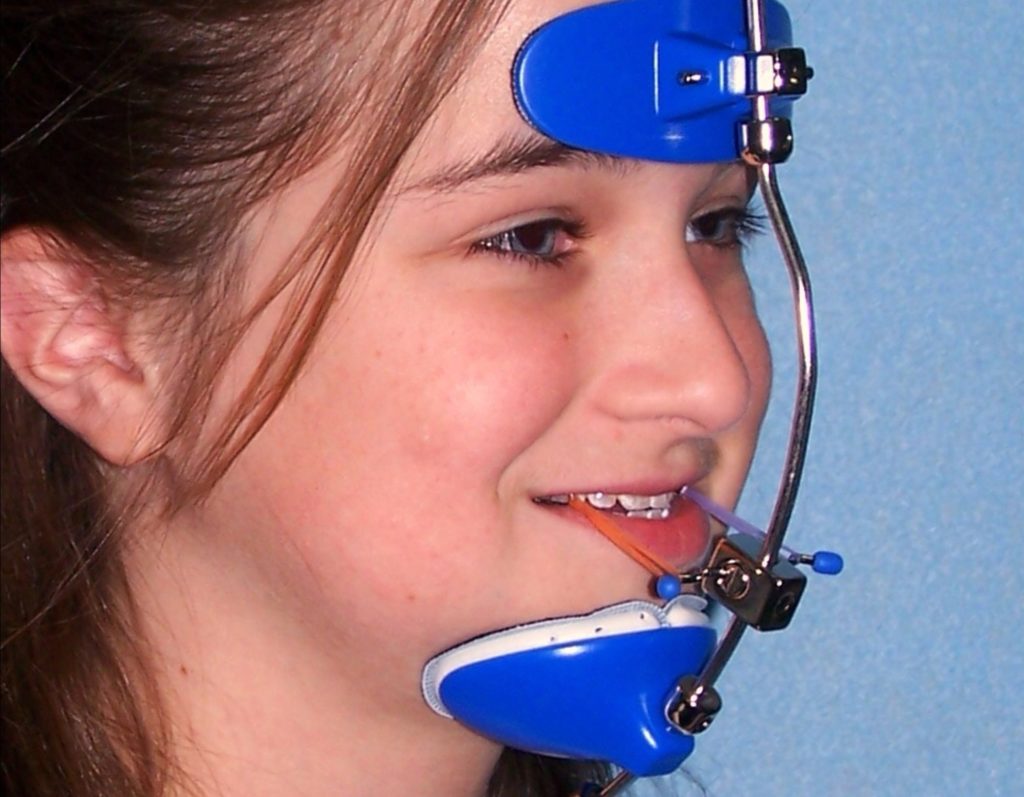 In the 19th century, the United States began to see significant orthodontic contributions. In 1822, J.S. Gunnell invented a form of headgear that fastened to the jaw from the outside of the mouth and exerted gentle pressure on the teeth. He referred to it as occipital anchorage. In 1840, the first classic book on dentistry was published. Written by Chapin A. Harris, “The Dental Art” outlined practices like soldering knobs on bands to assist with tooth rotation, and applying gold caps to molars to open the dental bite. Charles Goodyear invented vulcanized rubber in 1839, and before long, orthodontists realized its potential. Just a few years later, E.G. Tucker became the first American dentist to use rubber in orthodontic appliances.
In the 19th century, the United States began to see significant orthodontic contributions. In 1822, J.S. Gunnell invented a form of headgear that fastened to the jaw from the outside of the mouth and exerted gentle pressure on the teeth. He referred to it as occipital anchorage. In 1840, the first classic book on dentistry was published. Written by Chapin A. Harris, “The Dental Art” outlined practices like soldering knobs on bands to assist with tooth rotation, and applying gold caps to molars to open the dental bite. Charles Goodyear invented vulcanized rubber in 1839, and before long, orthodontists realized its potential. Just a few years later, E.G. Tucker became the first American dentist to use rubber in orthodontic appliances.
Although dentists would make tremendous strides in understanding how the teeth and jaws worked over the next century, braces themselves remained more or less unchanged for quite some time. Most were made from materials like gold, platinum, silver, steel, gum rubber, or vulcanite, but early orthodontists would sometimes turn to ivory, zinc, copper, brass, or even wood instead. Up until the 1970s, orthodontists anchored brackets by winding wires around each individual tooth. The invention of dental adhesives allowed them to switch to sticking brackets to the surfaces of the teeth instead. Meanwhile, stainless steel replaced gold and silver as the most popular choice for wires thanks to its shapeability, significantly reducing the cost of braces costs, and making them more widely available. Lingual braces also came along in the 1970’s, and were the first to address aesthetics by running along the inside of the teeth’s surfaces instead of being affixed to the outer surface.
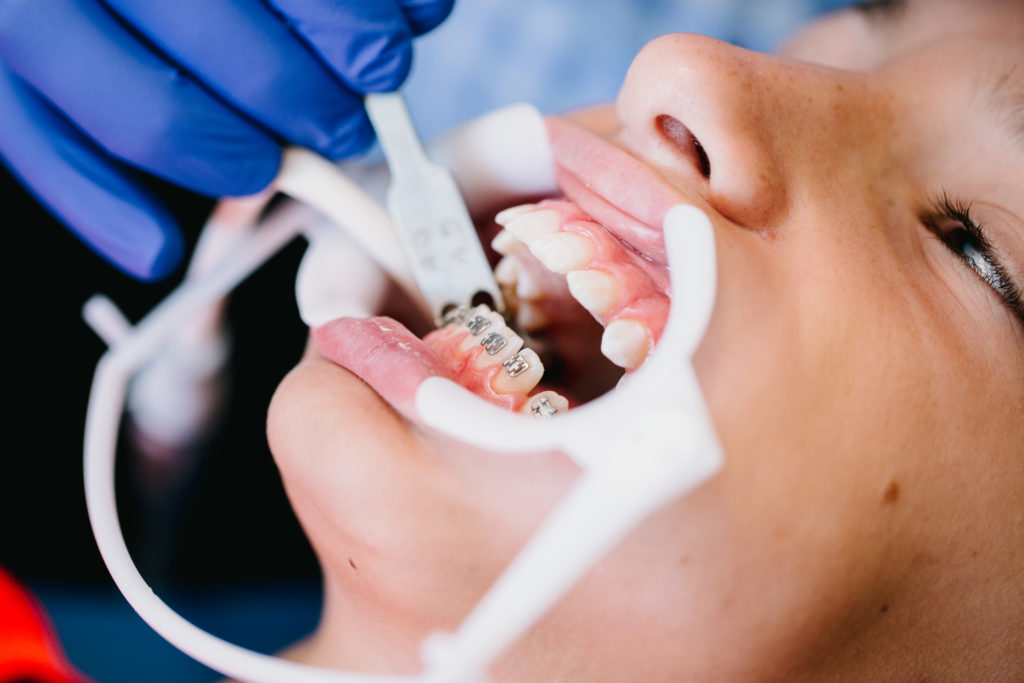
Straight smiles from the Nile to the mighty Mississippi
Humans have been striving for a healthy, functional smile going back thousands of years, and well-aligned teeth and jaws are as important today as they were in the time of catgut and bandeaus! Saddle Creek Orthodontics are proud to continue such an established tradition of improving oral health, along with patient’s lives. With three conveniently located offices across Memphis, our skilled staff are able to provide the best in orthodontic service for patients of all ages. Whether it is an early orthodontic examination for your young child, a complimentary consultation for your teen, or learning what benefits orthodontics have to offer you as an adult, SCO is the place to be. Get in touch with us today and we will help you find your smile’s place in history!
